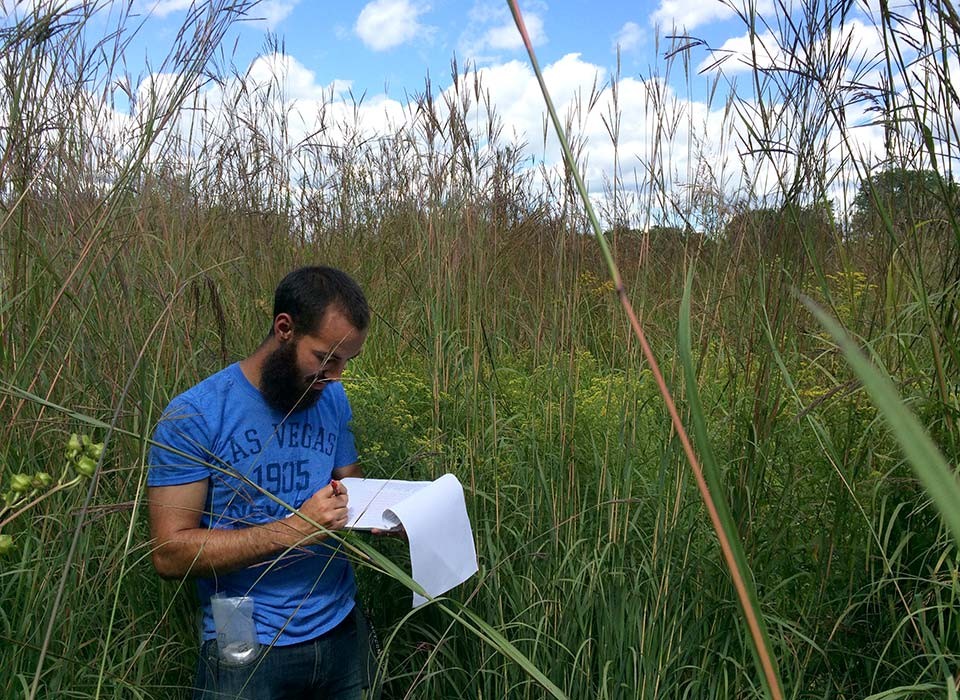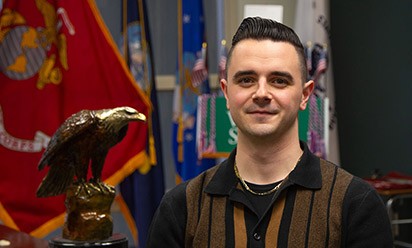EMU professor Emily Grman's research focuses on prairie restoration and plant biodiversity

When settlers first came to the upper Midwest, prairie fields full of native plants like tall green milkweed, leadplant and white indigo were scattered. Today, you can hardly find a prairie, let alone a leadplant.
That’s because the settlers plowed over the prairies for farmland, which wiped out the native habitat for dozens of plant species that once thrived in Michigan and other Midwestern states.
“Abandoned farmland is not a good habitat for native plant species,” says Emily Grman, assistant professor of Biology at Eastern. “Prairies are dominated by bunch grasses. A very diverse number of native plants live between those grass clumps. Native prairie plants generally don’t live in the old fields you see along the side of roadways.”
Michigan’s few remaining prairie habitats are still being torn up for development. Most native prairie plants aren’t extinct, but some are on Michigan’s list of endangered plant species.
You might think prairie restoration would be as simple as sowing seeds. But it’s not that easy, Grman says.
“There are a number of obstacles,” she says. “Non-native weeds are invasive and can choke out new plantings. Some species may require special soil conditions. The native plants may rely on certain microbes that are missing. Climate change and different weather patterns also make a difference.”
To help sustain this rare ecosystem, Grman is researching the effects of genetic and species diversity on restoring prairie grasslands.
“We’re collaborating with Michigan State University to restore 12 fields in Kalamazoo County covering a total of 35 acres,” Grman says. “We began in Fall 2015 by changing our seed mixes to vary the species diversity. Some mixes have 10 to 12 species; others have 60 or 70 species.
“We’re also focusing on genetic diversity by planting seed mixes that come from one seed provider, as well as mixes that come from three different providers. We want to see what combination and conditions will enhance our ability to restore native plants.”
Grman’s undergraduate students are assisting by collecting and examining soil samples from those fields.
“We want to identify what germinates on its own from the samples and evaluate how that new growth affects native plant species,” Grman says. “We’re also working with local photographers and other trained volunteers to monitor the butterflies, birds and insects the native plants attract. Prairies support a whole group of organisms.”
Grman’s research differs from past studies in terms of time and scale. Some of the fields studied are up to 8 acres, and she expects to monitor them for at least 10 years.
“Prairie ecosystems take a long time to restore,” Grman says. “You can’t even begin to call a field a prairie until at least two or three years have passed. It can take multiple generations to see results.
“If we care about preserving our environment’s biodiversity for posterity, then our work is important. These native plant species deserve to exist, and we want to help restore them and allow them to thrive.”
February 28, 2018
Written by:
Jeff Samoray
Media Contact:
Darcy Gifford
dgiffor2@emich.edu
734.487.5375
More Stories

Eastern Michigan University awards Summer Research and Creative Activity Grants.

Eastern Michigan University to launch new Bachelor of Business Administration in Financial Planning and Wealth Management degree.

Eastern Michigan University empowers student-faculty collaboration with Undergraduate Symposium Research Fellow Awards.

Eastern Michigan University senior Raya Lasiewski inspires hope and healing through personal journey with eating disorder.

Veteran exceeds limits to becoming an Eastern Michigan University graduate.

